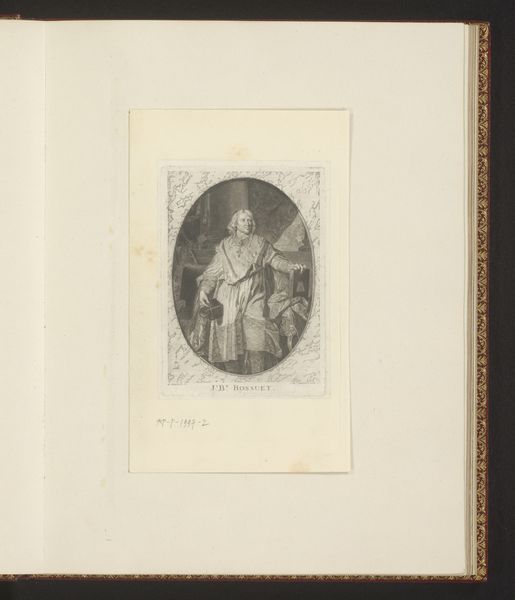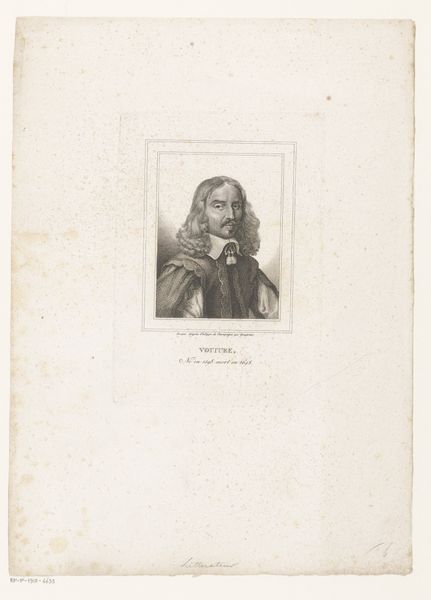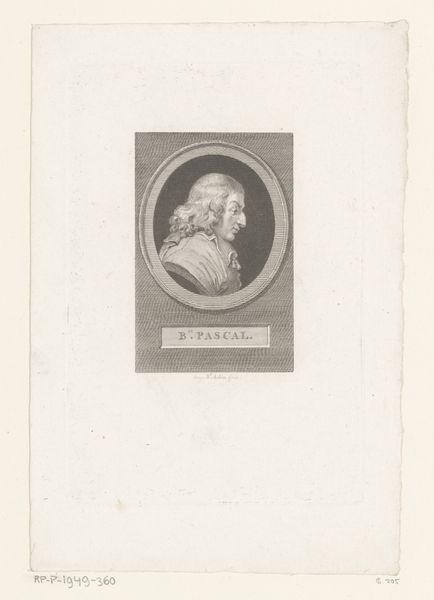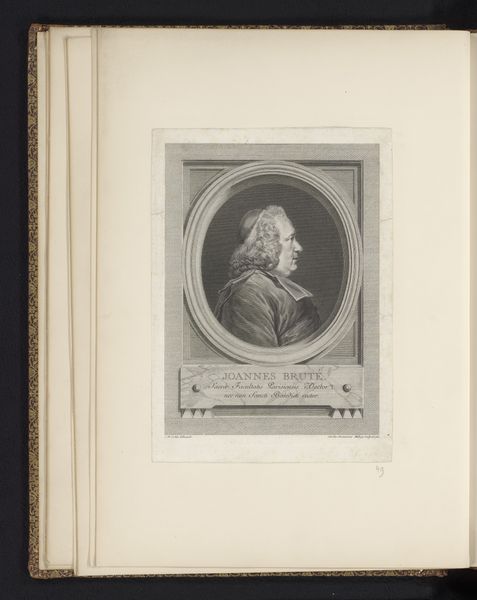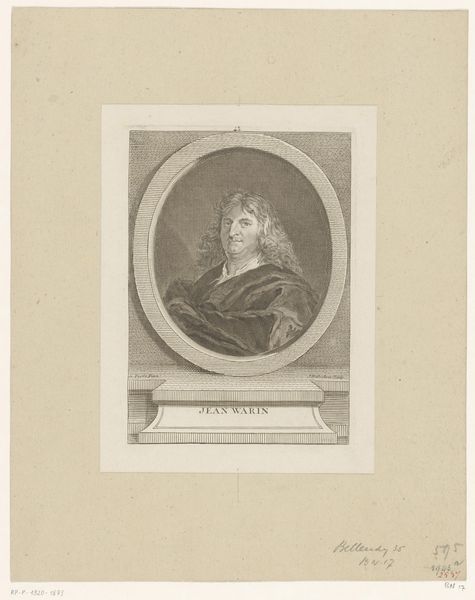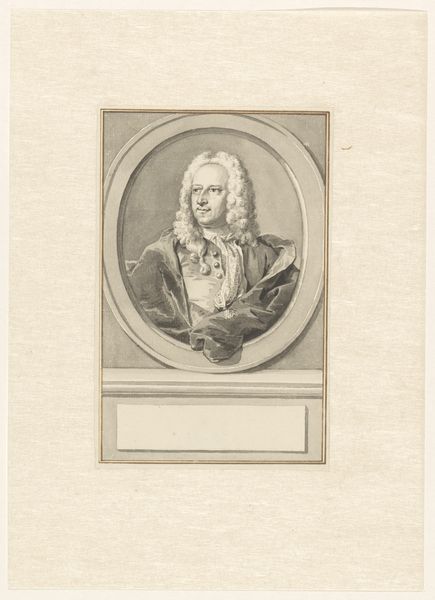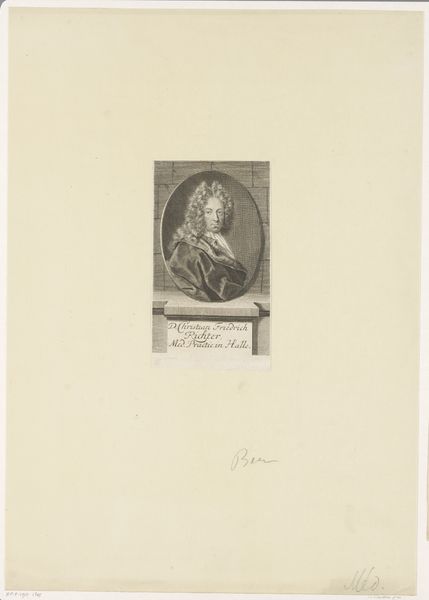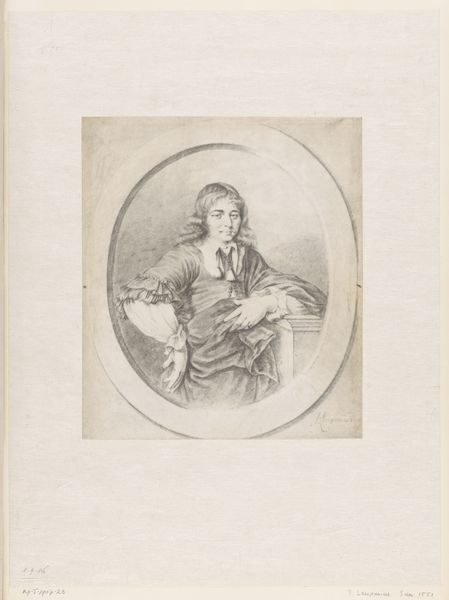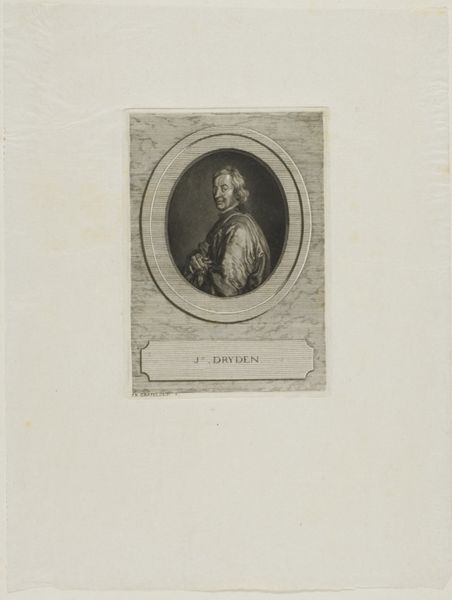
Reproductie van een gravure van een portret van Gerard Edelinck door Nicolas Etienne Edelinck before 1877
0:00
0:00
Dimensions: height 122 mm, width 85 mm
Copyright: Rijks Museum: Open Domain
Editor: This is a reproduction of a portrait engraving of Gerard Edelinck by Nicolas Etienne Edelinck, dating before 1877. I'm struck by the detail achieved on such a seemingly simple material - paper. What can you tell me about this work? Curator: The use of paper as a medium here is quite significant. Note its texture, its evident age, suggesting a homemade quality. Consider the social context: paper production, even in the 19th century, involved labor. The creation of such a detailed engraving required not just artistic skill, but significant time and a mastery of tools to manipulate the material. Editor: So, you're saying the inherent qualities of the paper itself and the engraving process are key to understanding the work? Curator: Exactly. The materiality dictates the artistic choices, it challenges a pure concept of 'artistic genius.' Think of the engraver’s hand, guided by the physical resistance of the copperplate, transferred to paper via pressure and ink. Each step involves labor, each material possesses its limitations and possibilities. Editor: It's fascinating to think of the engraver wrestling with the materials like that. I always focus on the image itself, not the process. Curator: Indeed, and the image's reproduction contributes further to the social context. Engravings like this disseminated portraits, making them available to a broader audience. This intersects with ideas of status and the emerging culture of celebrity. The portrait serves as a commodity, its value residing both in its artistic merit and its reproducibility. Is it "high art," or a trade? What's the distinction? Editor: It blurs the lines between art and craft, definitely something to consider when looking at older prints! Thank you. Curator: Precisely. Analyzing art this way forces us to confront its complex relationship to production, labor, and consumption, ultimately providing a richer, more nuanced understanding of art’s function within society.
Comments
No comments
Be the first to comment and join the conversation on the ultimate creative platform.
